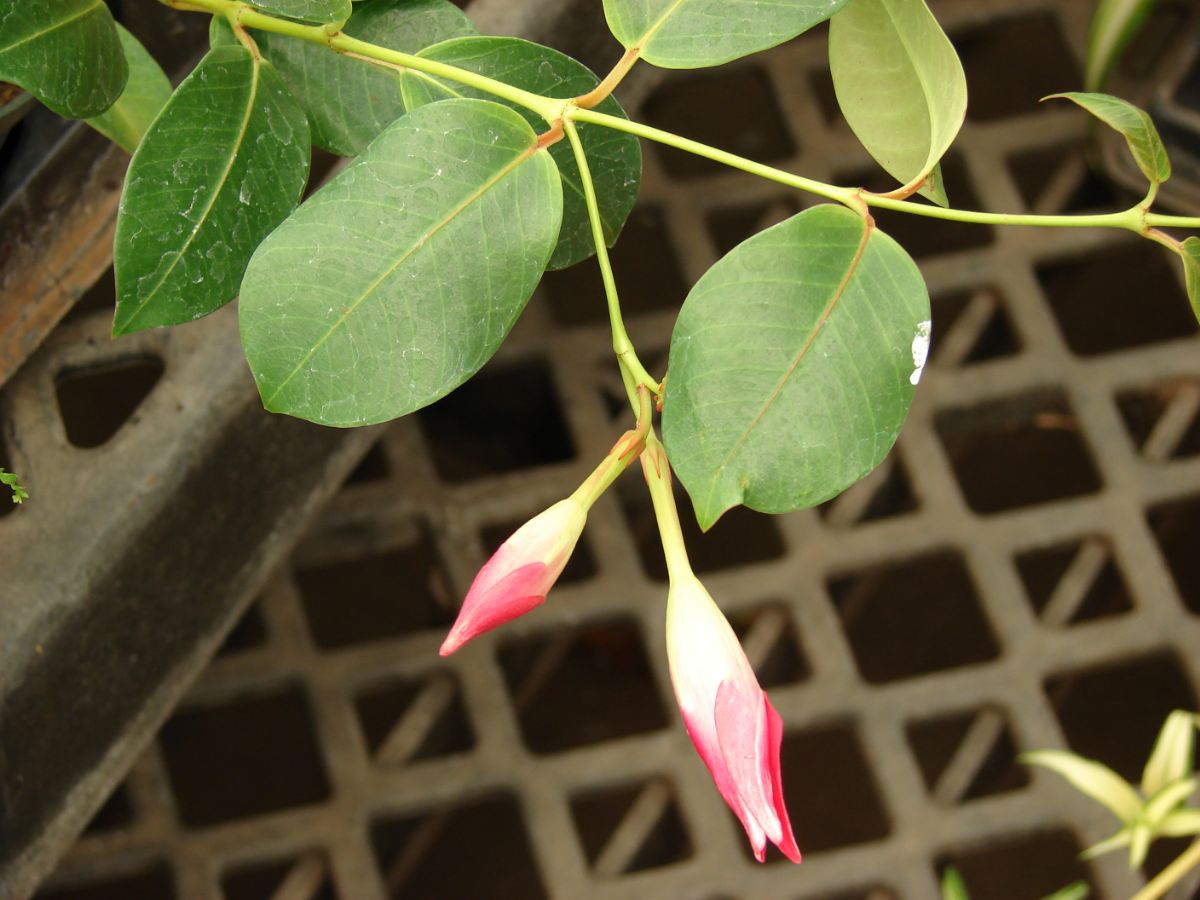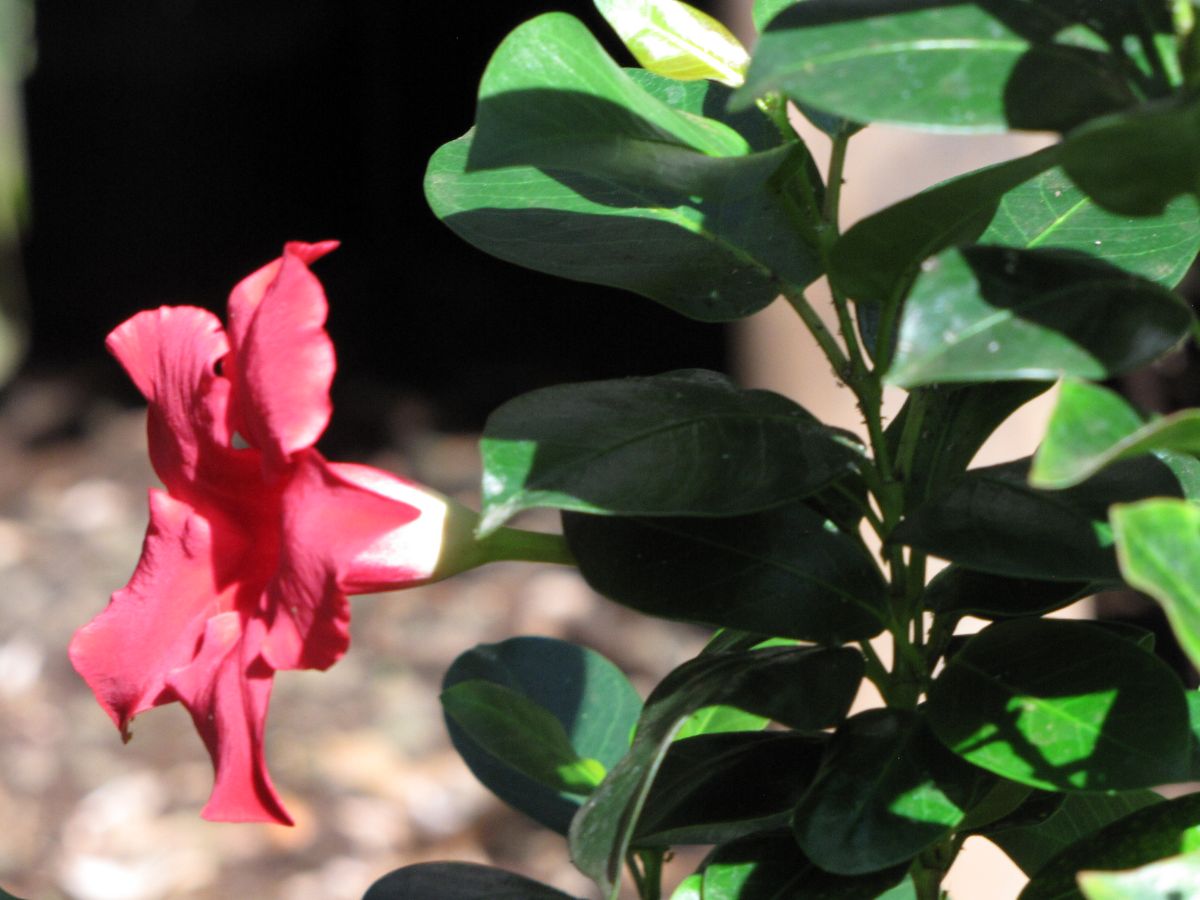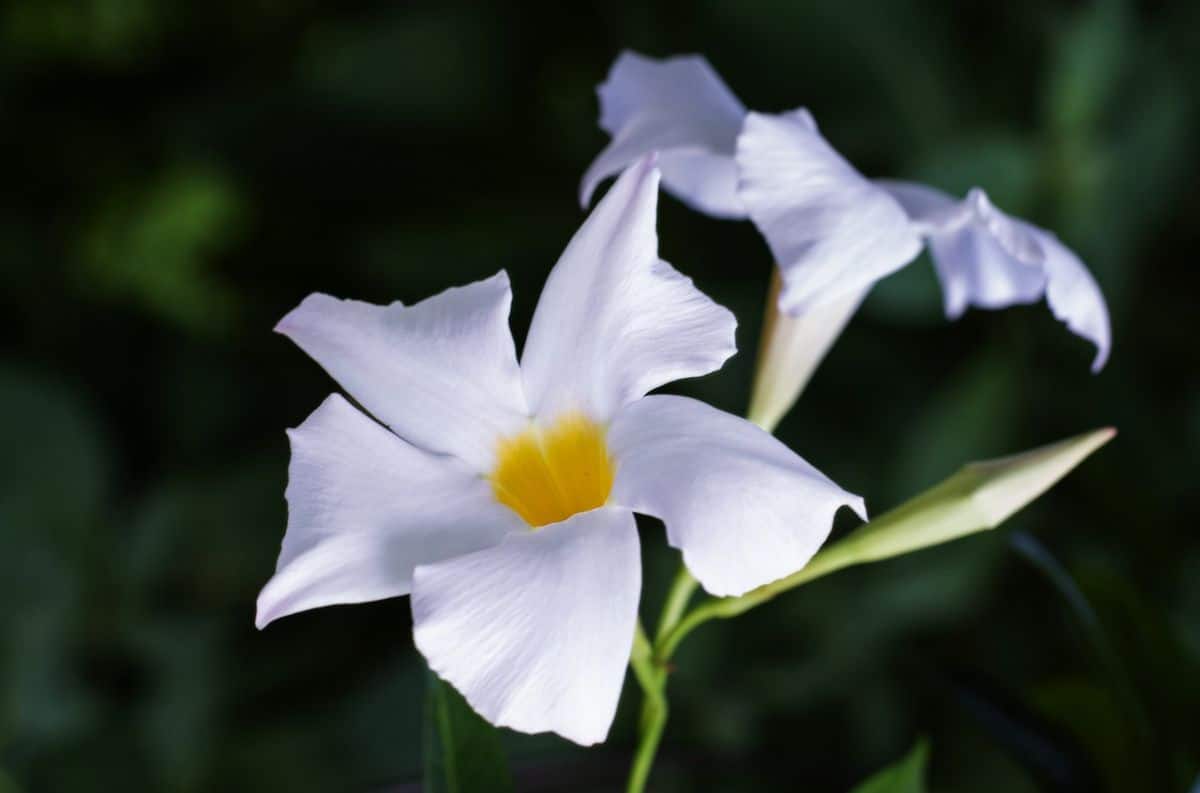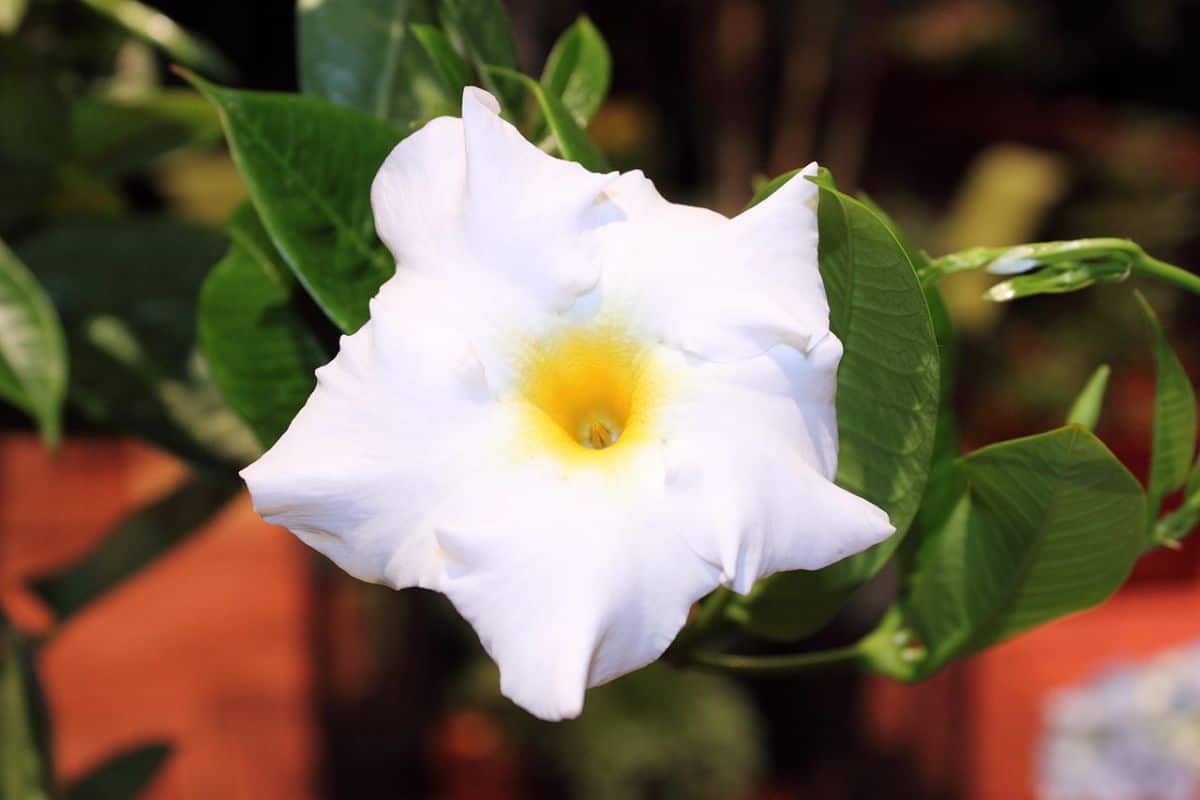
Within the climbing plants, one of the best known is the Mandevilla splendens. It is one of those chosen by many because it not only easily covers the walls or places where you want to place it, but it is also capable of bloom with elegant colored flowers that draw a lot of attention.
But how is the Mandevilla splendens? What care do you need? Do you have curiosities? We are going to tell you everything you need to know about this plant.
How is the Mandevilla splendens

Mandevilla splendens, mandevilla, dipladenia, Chilean jasmine, Chilean jasmine... There are actually many names by which we refer to the same plant. It is a climbing and herbaceous plant. It is deciduous, so in winter it will be "peeled" but if you protect it well in spring it will sprout again.
It grows very slowly but It can reach 5 meters in height. However, it is normal to have it small. What you will notice on the stem of the Mandevilla splendens is that it has a kind of fluff all over it; It is something characteristic of this plant.
Its origin is in South America where there it is evergreen because of the temperatures that are experienced throughout the year.
The most characteristic of this plant are its flowers, which can be red or white.
As for the leaves, these are quite large, of an intense green.
A point that you must take into account if you have pets or small children, is that the plant is toxic. It's okay to touch it, but if you ingest some leaves, flowers or part of the stem, it can cause serious situations. Therefore, it is better to keep it away to avoid accidents.
Caring for the Mandevilla splendens

As for the care, we are going to go step by step because this plant is a bit demanding and that means that you have to be on top of it to get it to survive; and, second, that it blooms for you. Go for it?
Location
La Mandevilla splendens can be put both inside and outside the house as long as the lighting needs are met. It needs a lot of light, a lot of heat and an environment that is humid.
As a good tropical plant that it is, do not give it direct sun, but in semi-shade, preferably for several hours. Also, if you live in a hot climate you may need a source of moisture to prevent the leaves from drying out or the plant from suffering from the heat.
By telling you that you can have it both inside and outside the house, it implies that it can also be grown in a pot. Indoors, it is good that you look for a room that is bright but do not place it near the window because it could have a mirror effect and burn it. It is better to place it in an area where it receives filtered light for several hours.
In addition, both outside and inside it would be convenient had a lattice or similar so that he could climb on it and the branches do not fall.
Temperature

As a good tropical plant that it is, does not tolerate low temperatures. In fact, from 10 degrees below, the plant will behave like a deciduous one, losing its leaves.
Therefore, if winters are usually cold in your area, it is best to protect it since it will not tolerate low temperatures, much less frost.
In its natural habitat it is completely perennial, but in other areas where a constant temperature cannot be guaranteed, it behaves as expired. Usually, its ideal temperature would be between 12 and 24 degrees.
Earth
so that the Mandevilla splendens grow vigorously and healthily is important provide a nutritious soil but at the same time that it has good drainage. Thus, a mixture of peat with coconut fiber, or peat and sand may be the best choices for this plant.
Others that you can take into account are compost, guano, etc.
Irrigation
Irrigation is one of the fundamental parts of this plant because it will require the substrate to always be moist, not waterlogged. Besides, neither the leaves nor the flowers can get wet because doing so would cause fungi to appear.
Therefore, it is best to have it with a good mixture of soil and drainage and water it more or less (depending on where you live):
- In winter, every two weeks.
- In summer, at least 3-4 times a week.
Now, despite the fact that we have told you that it is not convenient to water or pour water on the leaves and flowers, the truth is that, to keep it in a humid environment, yes you will have to spray on the leaves so that they do not dehydrate. This is important because the Mandevilla splendens it is demanding in terms of irrigation and humidity.
Regarding irrigation, It does not tolerate drought, so it will take a while to know when it needs water and when it does not. What many do is monitor the first few days and when they see that the land begins to dry out, they water again.
With regards to moisture, it should be well stocked with it. For this reason, you will often have to leave a bowl of water next to it or apply a humidifier to cover that need.
Subscriber
Fertilizing must be carried out during the most important months, such as from spring to late summer. You can use a fertilizer for flowering plants that you will apply in the irrigation water.
you have to use it every 15 days until autumn arrives.
Pruning
Before the plant begins to flower, in spring, you will have to carry out a small pruning. This consists of remove branches that are broken or dry, but not much else is done because it is not a plant that easily tolerates pruning. Although, throughout the year, you can make it more aggressive (adult and old specimens are more resistant to stronger pruning).
Transplant
Unlike other plants, the Mandevilla splendens transplanted in autumn. To do this, you must take into account the type of soil and drainage that is going to be used and not abuse too large pot sizes because it can wear out the energies that the plant has.
Plagues and diseases
The most common pests are Red spider and mealybugs. Both are easy to avoid, in the case of mealybugs by applying alcohol or soapy water to the plant. From the red spider you can get rid of it with potassium soap or neem oil.
Multiplication
Reproduction of the plant takes place by seeds (from the flowers) or by woody cuttings, that is, of adult specimens and with several years.
Do you have more questions about Mandevilla splendens?
Hello. Thanks for the tips.
You're welcome 🙂